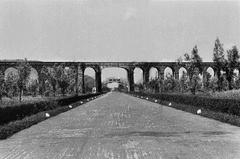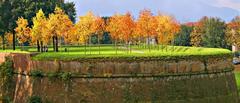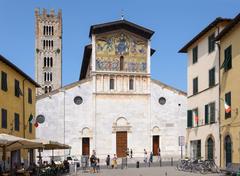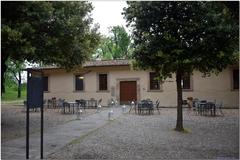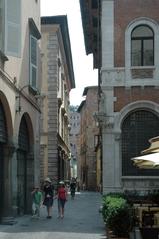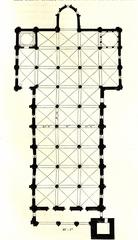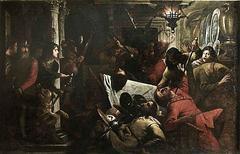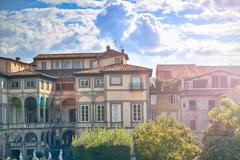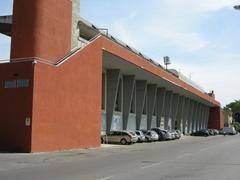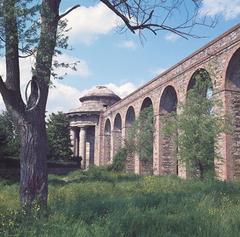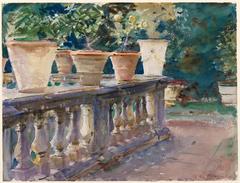Museum of the Risorgimento Lucca: Visiting Hours, Tickets, and Historical Sites Guide
Date: 14/06/2025
Introduction
Located in the historic heart of Lucca, the Museum of the Risorgimento offers an immersive journey into Italy’s unification era—known as the Risorgimento. This museum not only chronicles the national narrative of the 19th-century movement that led to the consolidation of Italy but also highlights Lucca’s unique and pivotal contributions. With a thoughtfully curated collection of artifacts, documents, and multimedia exhibits, the museum invites visitors to explore the political, cultural, and social transformations that culminated in the establishment of the Kingdom of Italy in 1861. Whether you are a history enthusiast, student, or casual traveler, the Museum of the Risorgimento Lucca provides an engaging and educational experience that connects local history to the broader Italian story (Nomads Travel Guide, Visit Tuscany, Museo del Risorgimento di Lucca).
Table of Contents
- Introduction
- The Risorgimento: Italy’s Path to Unification
- Lucca During the Risorgimento
- Practical Visitor Information
- Nearby Attractions and Photographic Spots
- Frequently Asked Questions (FAQ)
- Conclusion and Final Tips
- References
The Risorgimento: Italy’s Path to Unification
Background and Key Figures
The Risorgimento, or “Resurgence,” was a 19th-century movement that unified the fragmented Italian peninsula through a series of political, social, and military efforts. The process, beginning in the late 18th century and culminating in 1871, involved revolutions, wars of independence, and diplomatic maneuvers that ultimately established the Kingdom of Italy in 1861 (Britannica, Wikipedia).
Key personalities included Giuseppe Garibaldi, Count Camillo di Cavour, Giuseppe Mazzini, and King Victor Emmanuel II. Cultural figures such as Alessandro Manzoni and composer Giuseppe Verdi played vital roles, the latter’s operas becoming unofficial anthems of the movement.
Cultural Impact and Legacy
The Risorgimento’s legacy is complex—while celebrated as a triumph of liberalism and national unity, historians debate its inclusivity and long-term effects on different social classes. Nonetheless, the movement fostered a strong sense of Italian identity and laid the foundation for modern democracy (Britannica).
Lucca During the Risorgimento
Political and Social Dynamics
Lucca, once an independent republic, underwent significant changes during the Risorgimento. After a period under the Bourbon-Parma family, it was annexed to the Grand Duchy of Tuscany in 1847, reflecting the broader realignment of Italian states. Lucca’s residents actively participated in the movement, contributing to both political and cultural aspects of unification (Nomads Travel Guide).
Museum Collections and Public Memory
The Museum of the Risorgimento in Lucca, housed in the historic Palazzo Ducale, showcases a robust collection of weapons, uniforms, documents, and personal items from local patriots and national figures. The exhibits are arranged chronologically, tracing the city’s journey through the Risorgimento and highlighting the everyday experiences of its citizens. The museum also serves as a hub for commemoration, especially on March 17th, the anniversary of Italian unification (Museo del Risorgimento di Lucca).
Practical Visitor Information
Visiting Hours and Tickets
- Opening Hours: Tuesday to Sunday, 9:00 AM – 6:00 PM; closed Mondays and select public holidays.
- Admission: Adults €6; Reduced (students, seniors) €4; Free for children under 12.
- Tickets: Purchase onsite or book online via the official museum website. Group and guided tour rates available.
Note: Hours and prices may change seasonally or during special events. Always check the official website before your visit.
Accessibility and Facilities
The museum is wheelchair accessible, with ramps and elevators available. Seating is provided in exhibit areas, and visual aids are offered for visitors with different needs. For specific accessibility questions, contact the museum ahead of your visit.
Guided Tours and Special Events
Guided tours (including English-language options) and educational workshops are available by reservation. The museum also hosts temporary exhibitions, commemorations, and public lectures—particularly around national holidays and local festivals.
Travel Tips and How to Get There
The museum is centrally located in the Palazzo Ducale, within walking distance of Lucca’s train station and major city landmarks. The historic center is mostly pedestrianized; parking is available outside the city walls. Local buses and taxis provide easy access for those arriving by public transport (mytravelintuscany.com).
Nearby Attractions and Photographic Spots
Enhance your visit by exploring:
- Lucca’s City Walls: Ideal for scenic walks or cycling.
- Piazza dell’Anfiteatro: Unique oval square built on a Roman amphitheater.
- Guinigi Tower: Famous for its rooftop garden and panoramic views.
- Palazzo Mansi National Gallery: Renowned for art collections and period interiors.
- Puccini Museum: Dedicated to the celebrated composer.
These sites are within walking distance and provide excellent photographic opportunities (Visit Tuscany).
Frequently Asked Questions (FAQ)
Q: Are guided tours available?
A: Yes, guided tours (including in English) can be booked in advance.
Q: Is the museum accessible for wheelchair users?
A: The museum is generally accessible and offers support for visitors with mobility needs.
Q: Can I purchase tickets online?
A: Yes, tickets are available both onsite and online through the official museum website.
Q: Are there family-friendly activities?
A: The museum offers educational workshops, activity booklets, and interactive displays suitable for children.
Q: What is the best time to visit?
A: Spring and autumn offer pleasant weather and fewer crowds. Mid-morning or late afternoon on weekdays are typically quieter.
Conclusion and Final Tips
The Museum of the Risorgimento in Lucca stands as a testament to the city’s vital role in Italy’s unification. Its curated collections, educational programs, and central location make it an essential stop for anyone interested in Italian history or exploring Lucca’s cultural heritage. For the most up-to-date information on visiting hours, ticketing, and events, consult the official museum website and the Lucca Tourism portal. Download the Audiala app for audio guides and follow the museum on social media for news and special offers. Combine your visit with nearby landmarks for a comprehensive cultural experience in Lucca.
References
- Visiting the Museum of the Risorgimento in Lucca: History, Tickets, and Travel Tips – Nomads Travel Guide
- Museum of the Risorgimento Lucca: Visiting Hours, Tickets, and Historical Insights – MyTravelInTuscany
- Museum of the Risorgimento Lucca: Exhibitions and Visitor Information – Visit Tuscany
- Museum of the Risorgimento Lucca: Visitor Information – WhichMuseum
- Risorgimento – Britannica
- Unification of Italy – Wikipedia
- Museo del Risorgimento di Lucca Official Website
- Lucca Tourism Official Website
- Risorgimento and Unification of Italy – TheCollector
